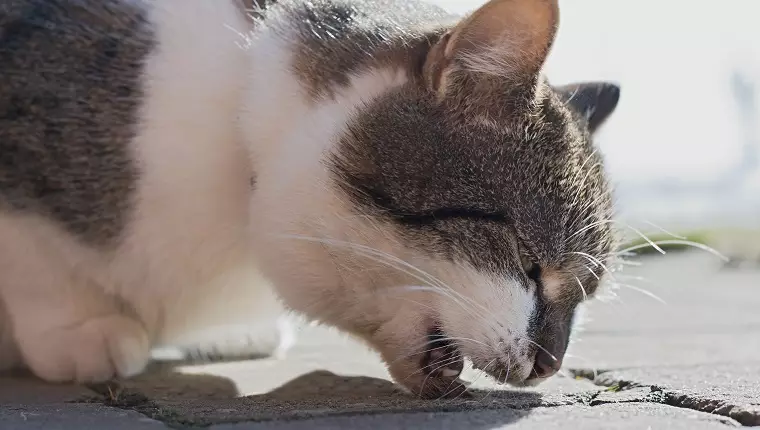Cats are renowned for their grooming habits, which can sometimes lead to an unpleasant side effect: hairballs. If you’re a proud cat owner, you’re likely familiar with the sound of your feline companion hacking up one of these furry nuisances. While hairballs are generally a common issue, they can pose serious health problems for your cat if not managed properly. This article delves into the causes of hairballs, their symptoms, and effective prevention and treatment methods.
Cats possess a unique grooming technique that involves their rough tongues, which act like a brush to remove loose fur and debris from their coats. While grooming serves to keep their fur clean, it also results in the ingestion of loose hair. Normally, this hair could pass through the digestive system without issue; however, in some cases, it accumulates in the stomach or intestines, creating a dense mass known scientifically as a “trichobezoar.” Subsequently, your cat may vomit to expel this hairball. Interestingly, hairballs typically take on a tubular form as they are compressed while moving through the esophagus.
Certain factors influence the likelihood of hairball formation in cats. Those who shed excessively, have longer fur, or engage in frequent grooming are more susceptible. Additionally, older cats may become more prone to hairballs as they develop more meticulous grooming habits. Underlying health conditions that cause excessive grooming, such as skin allergies or flea infestations, can exacerbate the problem.
As a cat owner, it’s crucial to be vigilant for signs that your cat is experiencing issues with hairballs. The most obvious symptom is the act of coughing or gagging, often followed by the expulsion of a hairball. However, in some instances, you might notice your cat vomiting food or mucus without producing a hairball. This could indicate that the body is grappling with hairballs underneath the surface.
It’s not uncommon for hairballs to appear infrequently; however, when they happen several times a week, it raises concern. Persistent hacking or attempts to vomit that extend beyond a single day might suggest a more critical situation. Other warning signs to watch for include a decrease in appetite, lethargy, and changes in bowel movements, such as constipation or diarrhea. If you observe any of these symptoms, it’s essential to consult your veterinarian promptly, as some conditions may require more intensive interventions, possibly even surgical procedures in severe cases.
Accessing effective treatment options for hairball-related issues is essential for the health and happiness of your feline friend. Many pet owners will consider special hairball remedy products available at pet stores, which often come in the form of lubricants or jellies. These remedies can facilitate the passage or expulsion of hairballs. Be sure to consult your veterinarian for advice regarding which product might be suitable for your cat, as well as how to use it effectively.
While occasional hairballs are generally not alarming, consistent and problematic occurrences necessitate more proactive measures. In addition to seeking veterinary assistance, preventing hairballs should become a priority for cat owners.
Proactive Measures: Prevention is Key
Though it’s impossible to eliminate hairballs completely from a cat’s life, there are several effective strategies to mitigate their frequency and severity. Open discussion with your veterinarian will guide you in tailoring a prevention plan unique to your pet:
1. **Regular Grooming:** Frequent brushing not only helps reduce loose hair your cat might ingest but also strengthens the bond between you and your pet. Long-haired breeds may benefit significantly from professional grooming.
2. **Nutritional Adjustments:** Some cat food brands are specifically designed to support skin and coat health through enhanced nutrition and added fiber. This fiber can aid in digestive processes, potentially reducing hairball formation.
3. **Hydration:** Ensure your cat has constant access to fresh water. Encouraging hydration supports overall digestive health. Consider investing in a cat water fountain, as the running water might attract your cat to drink more frequently.
4. **Increased Activity:** Keeping your cat engaged with toys and playtime not only diverts attention from excessive grooming but also promotes physical health. Regular exercise can help maintain your cat’s digestive system’s efficiency.
Understanding the implications of hairballs in your cat can significantly impact its well-being. Being attentive to symptoms and proactive with prevention can save your feline from potential distress. Consulting with a veterinarian for tailored solutions is always the best approach in tackling this common cat concern. How does your cat cope with hairballs? Recognizing the signs and taking preventative steps will pave the way for a healthier and more comfortable life for your cherished pet.


Leave a Reply